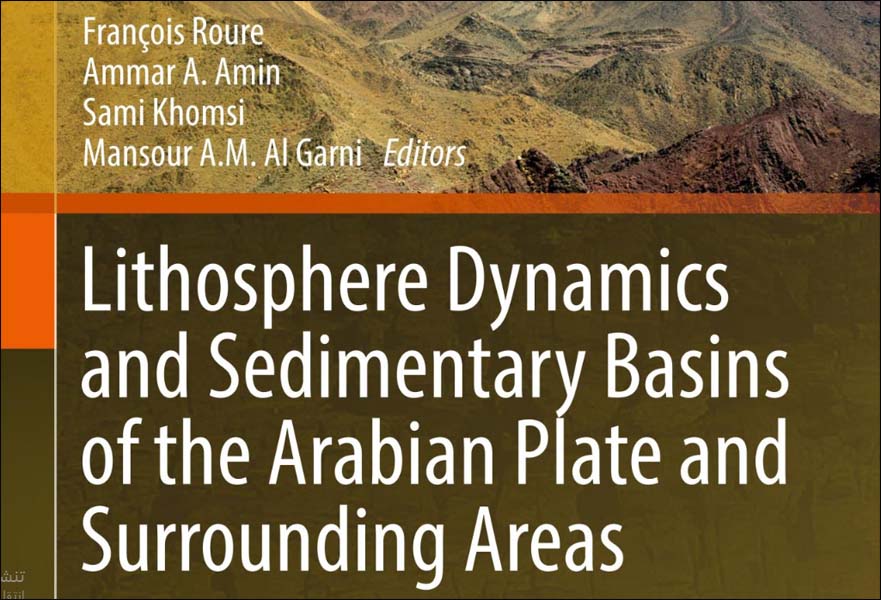Abdullah O. Bamousa and others (2017) Tectonic Style and Structural Features of Alpine-Himalayan Orogeny in Central Arabia (in): Roure, F., Amin, A., Khomsi, S., Al-Garni, M.A.M. (Eds), Lithosphere Dynamics and Sedimentary Basins of the Arabian Plate and Surrounding Areas, Springer, pp 173-185.
Abstract
Mesozoic rocks of the Interior Homocline and overlying Early Paleogene rocks in Central Saudi Arabia were investigated via detailed geologic and structural mapping, image interpretation and GIS compilation of geological and remote sensing data.
These rocks were deformed by several large-scale tectonic and structural features. The main tectonic feature is related to the East Arabian Block, which is bounded by three large-scale structures. The northern margin of the East Arabian Block is outlined by Wadi Al Batin Dextral Fault. The western margin of the block is related to the Az Zulfi Lineament, whereas the southern boundary of the block corresponds to Dhruma-Nisah-Sahba Sinistral Fault zone, also known as the Central Arabian graben. The East Arabian Block includes several large-scale features, such as N-S Artawiyah Depression, which is a geomorphic feature reflecting inversion and reactivation of the Proterozoic Al Amar fault that extends below the Phanerozoic rocks from easternmost Arabian Shield up to Iraq. Structural features include the NNW-SSE Majma’ah Sinistral Fault Zone, and the NNW-SSE fault-related Majma’ah anticline, as well as other NNW-SSE anticlines, such as Al Jinadriyah and Jabal Al Jubayl anticlines. The NNW-SSE Majmaah fault zone and fault-related fold deformed Paleogene beds and older rock units. Therefore, these various structural features suggest a first episode of inversion during the Eocene, which occurred synchronously with the Alpine-Himalayan Orogeny. However, these tectonic features still control local depressions, developed during the Pleistocene, which have accommodated sedimentation and deposition of Pliocene rocks and Pleistocene sediments. E-W and NE-SW trending structural features such as E-W sinistral fault zones, the NE-SW Wadi Al-Batin strike-slip fault, and minor NE-SW en echelon strike-slip faults and folds dissected the former N-S structural features in Central Arabia. These younger features developed during the Pleistocene, accounting for a second phase of foreland inversions, and are still related to the Alpine-Himalayan Orogeny. This recent deformational event includes disharmonic folds, formed by detachment folding and layer-parallel shortening of the Late Jurassic to Early Cretaceous strata of the Sulaiy Formation. The detachment folding event may be part of a decollement zone, responsible for the overall basin-and-dome out crop pattern of the Sulaiy Formation. The cross-cutting relationship between the NNW-SSE structures and the NE-SW fractures and folds suggest a main NE-SW regional tectonic stresses, developed by Zagros Mountain fold-and-thrust belt in its adjacent foreland. The Zagros Mountain fold-and-thrust belt represents the easternmost margin of the East Arabian Block.
Keywords
Central Arabia plate East Arabian Block Zagros Mountain Alpine-Himalayan orogeny Fault-related folds Layer-parallel shortening Late Eocene Inversion
http://link.springer.com/chapter/10.1007/978-3-319-44726-1_8
 أ.د. عبدالله بن عمر باموسى الموقع الشخصي
أ.د. عبدالله بن عمر باموسى الموقع الشخصي


